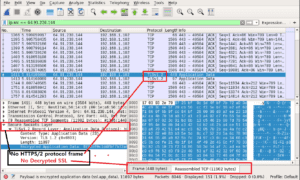

However, please note that this ensures the authenticity of the senderthe private key is held confidential by the corresponding sender. Thus, practically anybody can decrypt this since this key is distributed.

Text encrypted by the senders private key can be decrypted by the senders public key.One key (a private key) is kept confidential and the other key (the public one) is distributed.For example, RSA encryption with a 1024-bit key is about 250 times slower compared to AES encryption with a 128-bit key. Asymmetric key encryption and decryption is slow compared to symmetric key encryption.Some important points about asymmetric key encryption are: Examples of the asymmetric key encryption algorithm are Rivest, Shamir Adleman (RSA), ElGamal, Elliptic curve cryptography, etc. Thus, the same key cannot perform encryption and its corresponding decryption. Text encrypted by one key can be decrypted only by the second key and vice versa. However, the key must be known to both sides for successful operation.Īsymmetric key encryption: A key pair is used for encryption and decryption. The typical length of a key is 128 bytes onwards, making encryption-decryption fast. Examples of the symmetric key algorithm are the advance encryption standard (AES), data encryption standard (DES), etc. Symmetric key encryption: A single key is used to encrypt and to decrypt. Decryption is the exact reverse of the process of encryption. To understand secure protocols, let me try to explain the basics of encryption and decryption in simple terms.Įncryption is a technique used to make readable (clear text) data unreadable (cipher text), typically using complex mathematical algorithms.

Secure protocols encrypt traffic travelling between two end points thus all the traffic available on the network is unreadable unless and until decrypted. To keep a network traffic sniffer from revealing login credentials, secure protocols such as https, ssh, sftp, etc, are used instead of their respective clear text protocols like http, telnet and ftp. Wireshark, an interesting open source network sniffer, can not only read network traffic, but can further decrypt https traffic provided you have the private key! Lets learn more about decrypting https traffic using this tool. In this article, the author demystifies the business of encrypting and decrypting network traffic, and translates arcane terms such as https, ssh, sftp, etc.


 0 kommentar(er)
0 kommentar(er)
